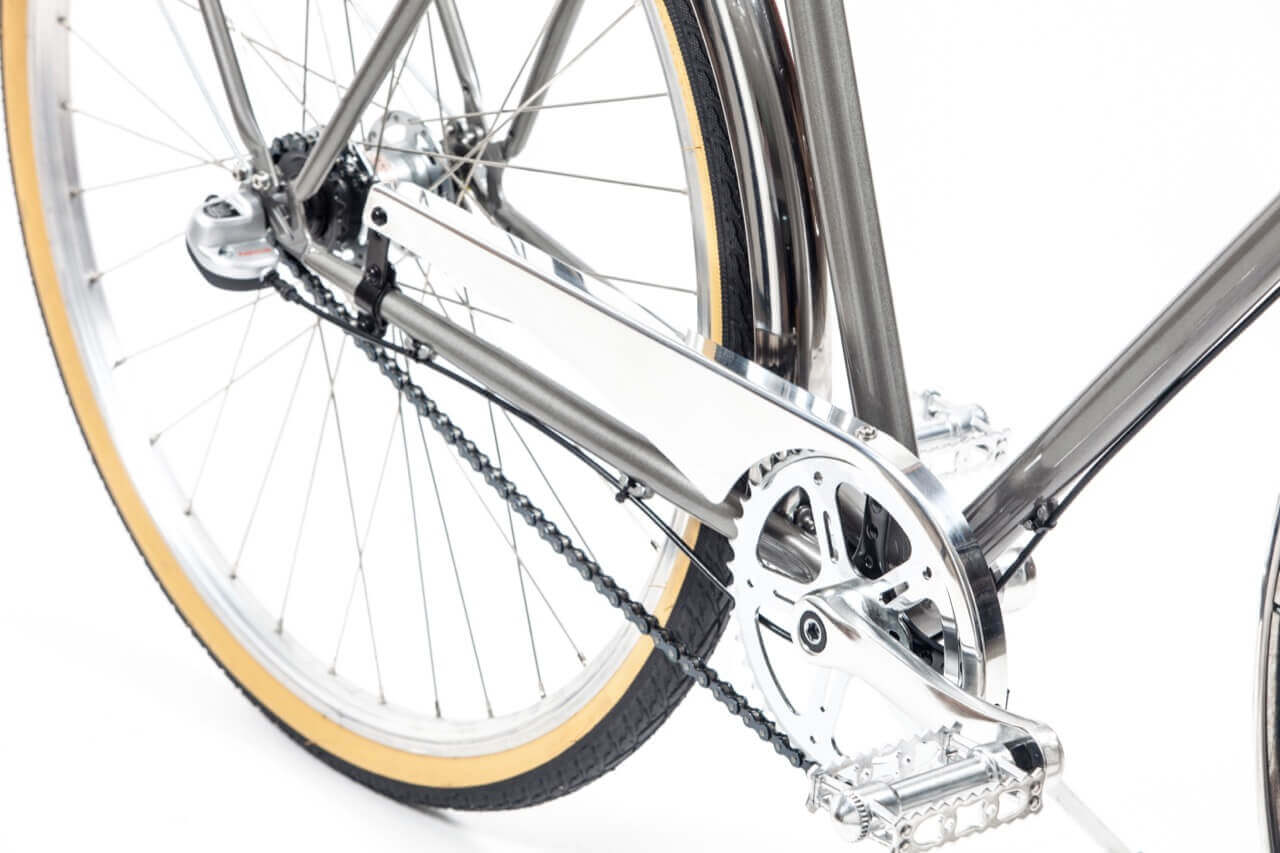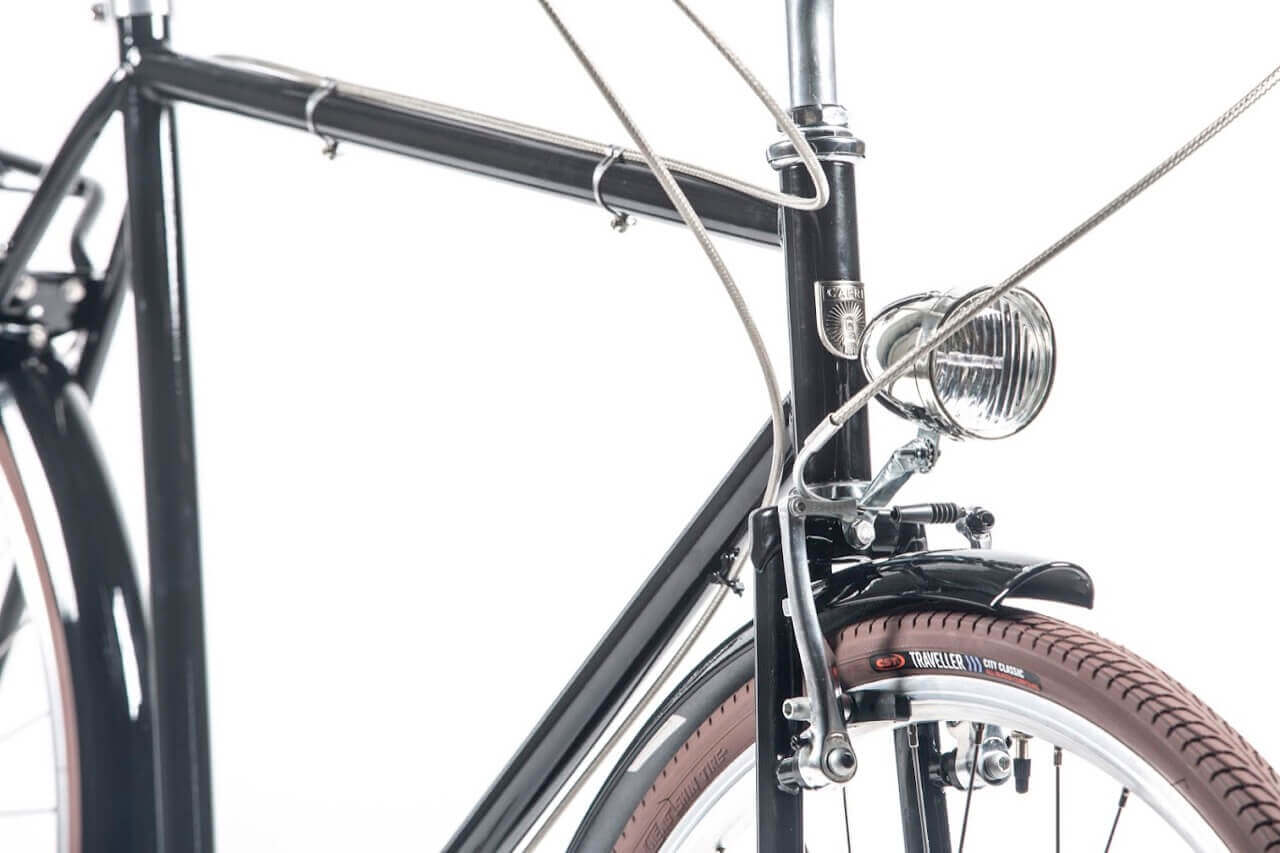Tips for the maintenance of urban bicycles
The maintenance of urban bicycles is essential for safe riding. The city emits particles that make your bike dirty and wear out, so you need to know how to keep it in good condition. In this post we detail how to treat it with care.
Contenidos
Clean your bike regularly
The first line of defence in keeping your bike in top condition is a good cleaning. Remember that when it is dirty, the deterioration of its components is much greater.
The part that suffers the most is the transmission system. In particular, the chain needs special care, as it traps a lot of soil particles. Teeth and sprockets also experience the consequences of soiling.

How to take care of the chain?
The chain is the core element of your bike. Apart from using a good degreaser, we advise you to follow these steps to keep it spotless:
- Remove the chain: It is recommended that you remove the chain for a more effective and thorough cleaning.
- How to wash it?: Put it in a can with gasoline. Cover the container and stir for a couple of minutes.
- Wipe with a rag: Once you take it out of the can, use a rag to remove excess dirt and petrol.
- Take another container and repeat steps 2 and 3.
- Wash with soap and water: After this step, rinse and dry.
Make sure that nuts and bolts are tightened securely.
A loose nut or bolt can damage components and may even be responsible for an accident. Also keep in mind that a loose screw is just as harmful as an over-tightened screw.
Whether you buy a new or second-hand bike, you should make sure that the parts are assembled and properly fitted.
Tyres, an essential part of urban bike maintenance
You may not think much of them, but wheels are essential for safe mobility. Riding with a worn tyre or a tyre without the proper tread for asphalt can be very dangerous.
There are two aspects you have to take care of: cameras and alignment. If the former are already four or five patches old, it is time for a complete overhaul. If the tyres are off-centre, you should take your bike to a workshop to have them checked and aligned.
If you need a tool to inflate your tyres, we recommend the Beto metal foot pump. Easy and convenient to use, it is equipped with a pressure gauge.
The importance of good lubrication
You should ensure that you keep all moving parts of your bike regularly lubricated. This will extend their service life.
While there are some parts that are best left to expert maintenance, there are others that you can lubricate yourself. Just keep in mind which product to choose for which part.
Here is a breakdown of the parts that need to be optimally greased:
- The chain: Every experienced cyclist knows that the chain must be watered regularly to ensure optimum performance of the entire drive system. We advise you to carry out this operation before each departure.
- The pedals: These are the ones that provide power to the bike. Just apply grease to the threaded areas of them every four to six weeks.
- The connecting rods: If you think they don’t need lubrication, you’re wrong. To remove them, just loosen one or two bolts and apply grease to the connecting rod cylinder. In this case, this operation should be carried out three or four times a year.
- Development: In addition to waxing the chain and cassette, you must also wax the derailleur. As this is a very exposed area, we suggest that you loosen the screw, disassemble this element and clean it with a toothbrush and a specific degreaser.
- The seatpost: If it is fixed, you should clean, grease and adjust this part that holds the saddle of your bicycle. If it is telescopic, all the more so, as its operation and performance will depend on how you take care of it. Clean it after every ride and make sure it is properly regulated.
- Stem: You may overlook this item because you think it involves disassembling the whole bike. In reality, it’s all about loosening a screw and pulling. After that, you have to apply grease and put it back in place.
Examine the condition of the frame and the scissors.
We suggest that you check the frame and the scissors with a magnifying glass to detect fractures or bumps. The consequences if they are damaged are fatal: they can cause an accident.
If you notice a fault you can repair it or, if necessary, replace the part.
Check the braking system
To make sure it is in good condition, you have to examine, one by one, the elements that make it up.
First of all, check that there are no oil leaks from either the thrust plunger or the caps. Then, check the hoses to make sure they are not bent or worn.
Finally, stop at the tweezers. For these to function properly, there must be no leaks at the hose connections, pistons or bleed nipple.
Inspect your bike before you ride.
Una revisión rápida antes de subirte a tu bicicleta te permite identificar detalles que pueden pasar inadvertidos. Look at these aspects:
- Tyres must be inflated to the correct pressure.
- Decks shall be free of any objects adhering to them.
- Pay attention to brake levers, deterioration and position of brake shoes.
- The changes have to work perfectly.
In short, urban bicycle maintenance is a commitment to safety and peace of mind on your journeys. Thus, each element has a role to play. For this reason, you have to take great care in cleaning, greasing and gearing them. Remember that your bike is unique and its health depends on how you care for it, so taking care of every component is essential. We encourage you to consult our website and purchase the one you need.
